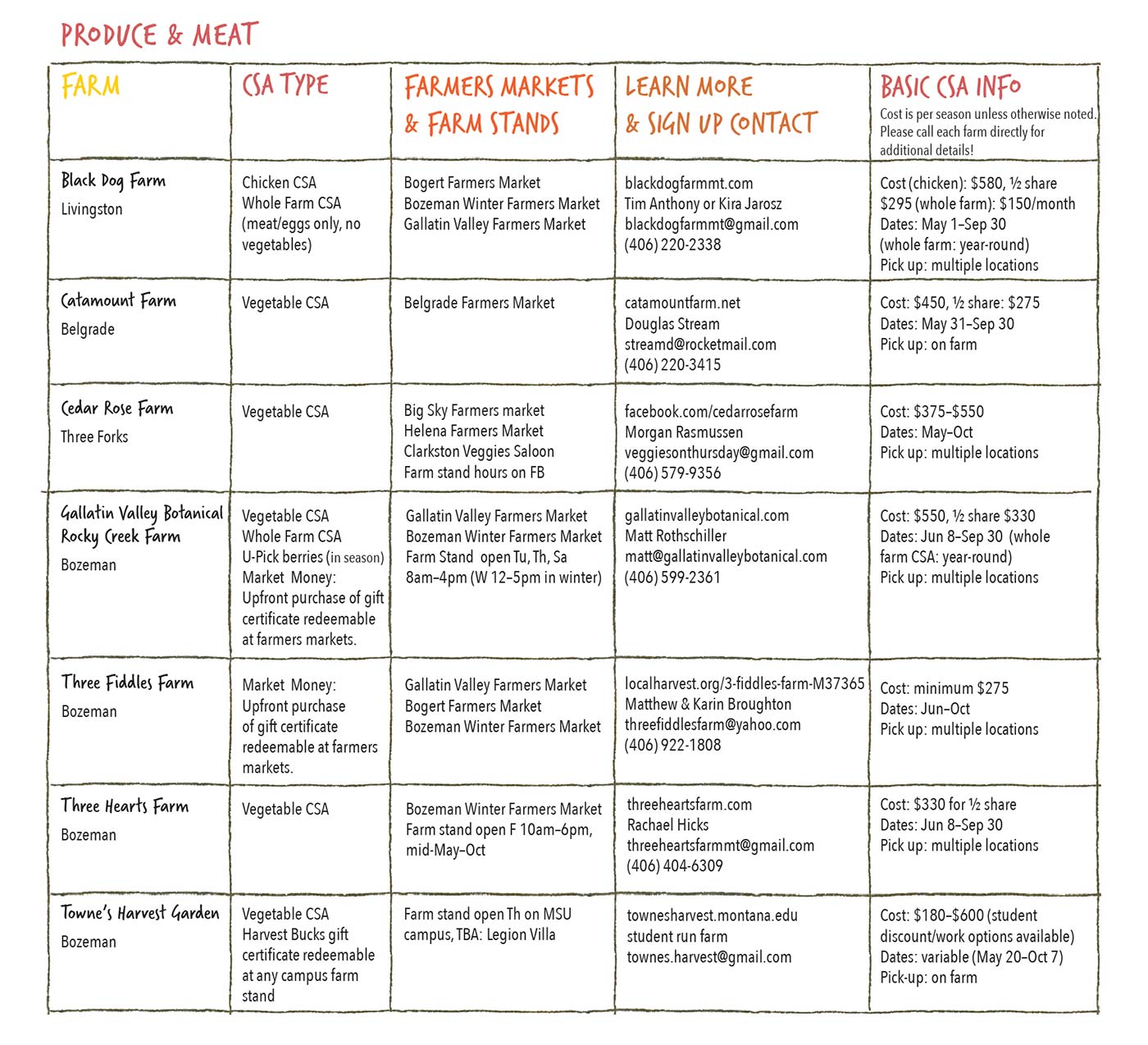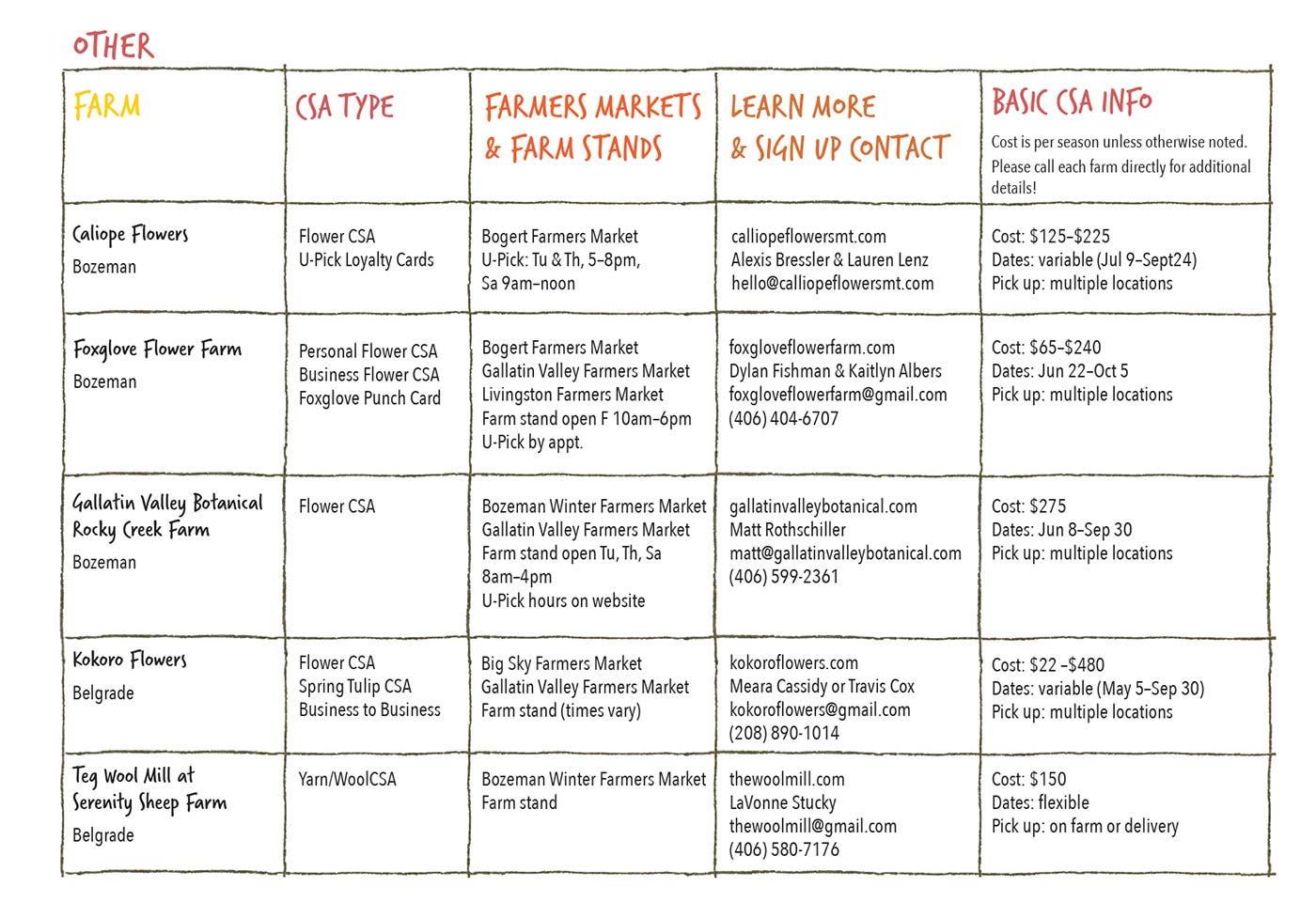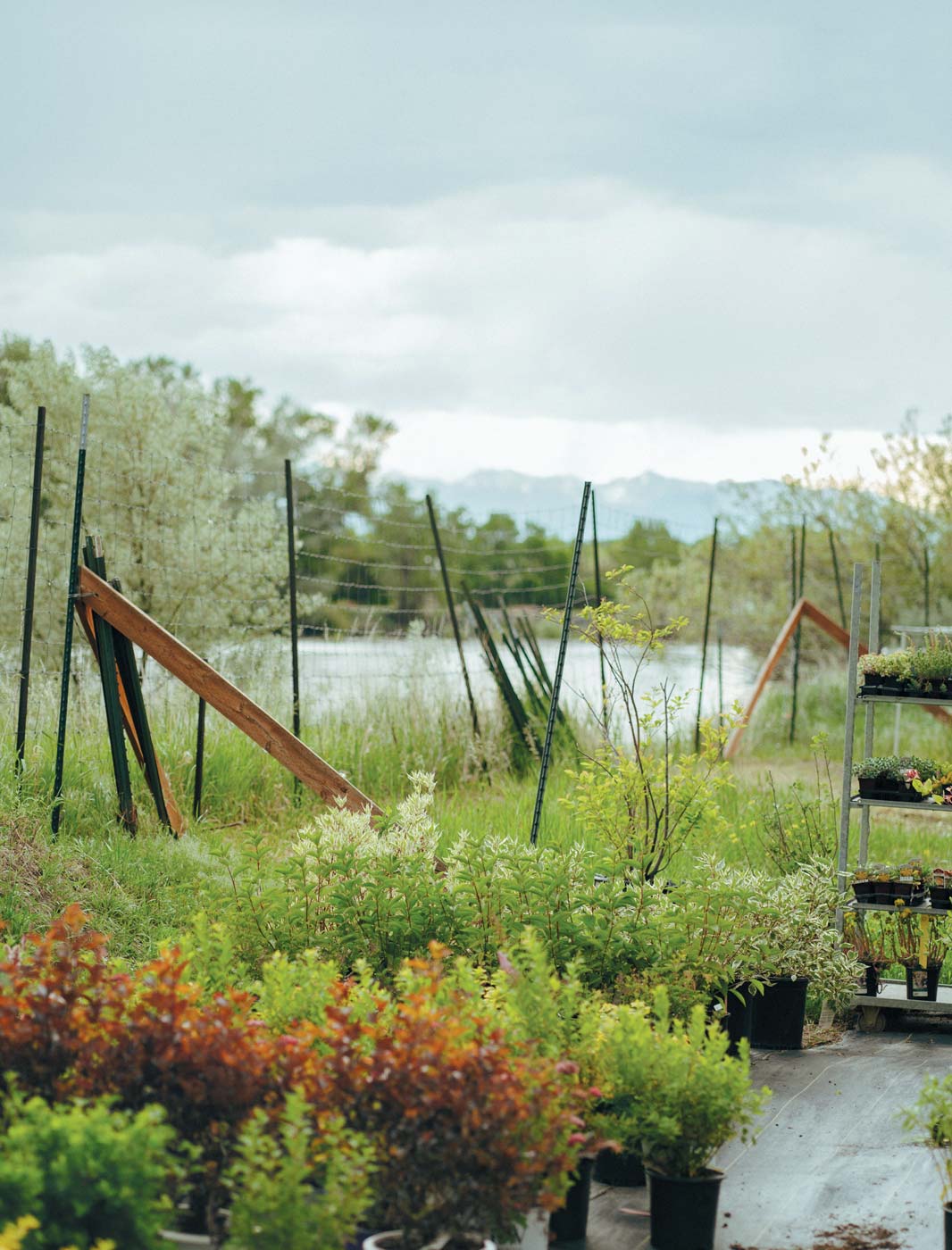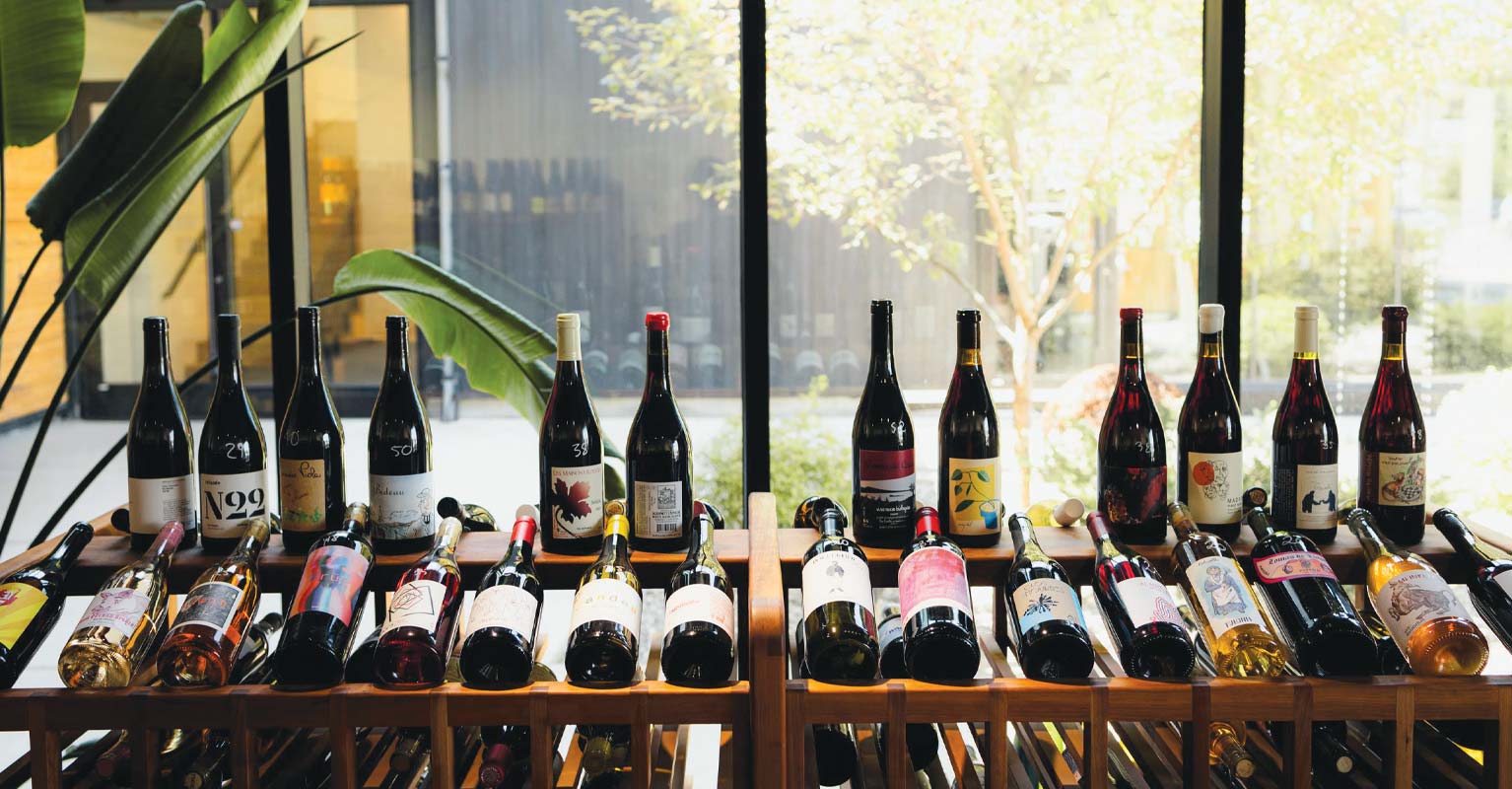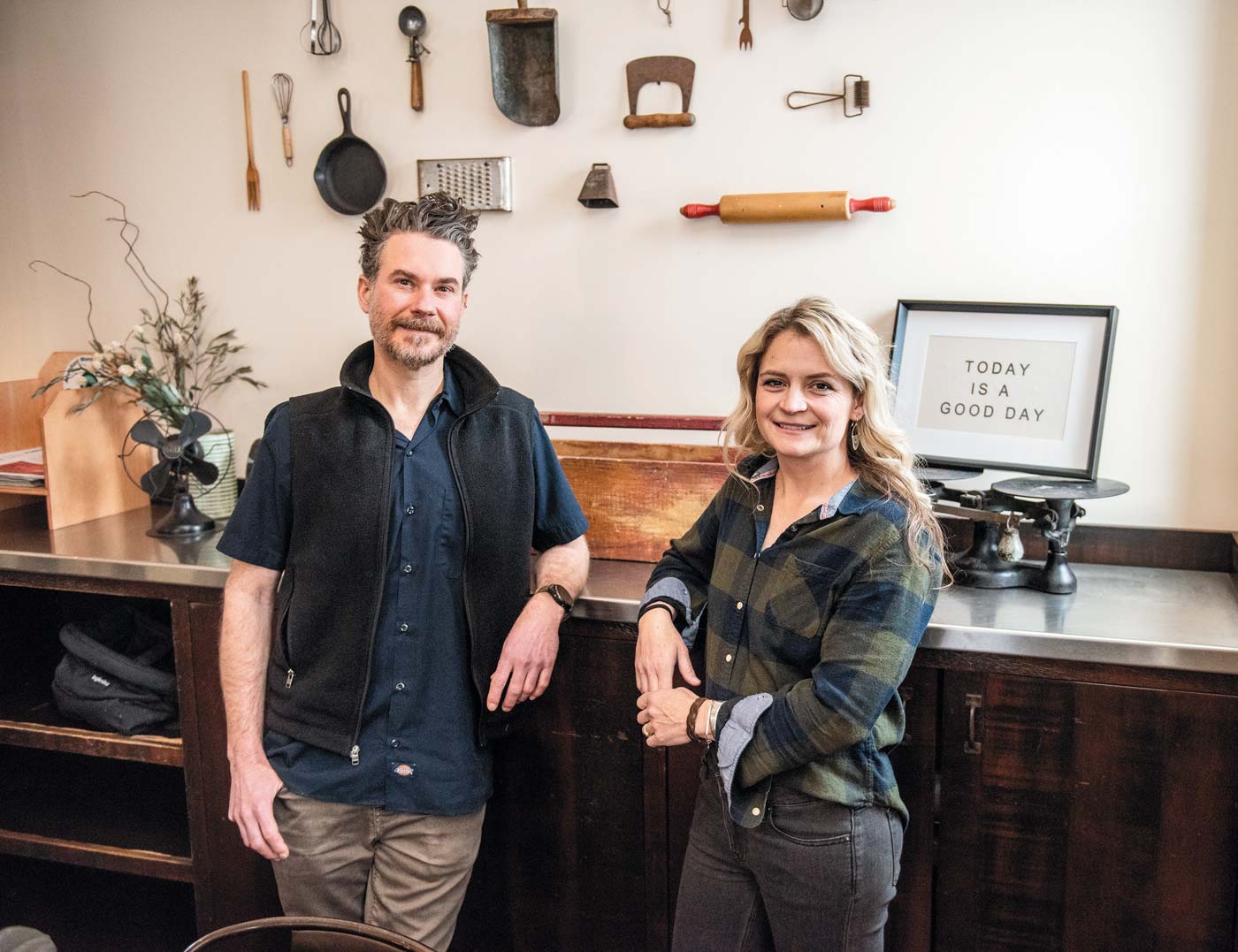We’ve all seen it: kids pushing vegetables to the sides of their plates, picking tomatoes out of their salads, pulling anything green off their pizza.
Why is that?
“Truth is, not all vegetables are created equal,” says Dr. Laura Goodell.
Goodell, who works as an acute care physician with MSU Medical Services and serves as faculty in the WWAMI medical- education program, is also a mom. When she moved her family from Dillon to Bozeman in 2015, she went looking for a place to get fresh vegetables. She found them through community-supported agriculture—and her family soon discovered they’d found a lot more than produce.
CSA
Community-supported agriculture, or CSA, is a cooperative agreement between community members and farmers. CSA members purchase shares in a farm early in the season, offsetting costs when harvest revenue is months away and yet farmers must invest in seeding, transplanting, working the soil, weeding, caring for baby chicks, and more. In return, the members typically receive a weekly box of vegetables or other farm products throughout the growing season.
Fundamentally, it’s a way to buy local food and farm products directly from a farmer, but the benefits extend far beyond a transaction. Members become part of that farm’s community, often receiving a newsletter with each delivery that includes recipes and opportunities to visit the farm. For farmers, the benefits include sharing the risks of growing with customers who will understand if hail takes out the kale or a freeze disrupts plant growth.
COMMUNITY
Matt Rothschiller, who runs Gallatin Valley Botanical (GVB) at Rocky Creek Farm with his wife, Jacy, has found that “CSAs give direct connection to a specific, real farm and the people farming. Members see the kale being bunched, eggs being gathered, what it means to produce.”
Goodell, whose family has a Whole Farm CSA share with GVB, appreciates the bounty. “We get vegetables every week, and then we also get eggs and flowers and honey and pumpkins and cider. We get a hen once a week and half a hog and a lamb throughout the year and a Christmas wreath and then a smattering of other things based on our interests.”
For her kids, pressing cider has become a family tradition: they have fun harvesting all the apples in their neighborhood and taking them to press. And Goodell’s twelve-year-old son, who adores pumpkin pie, has made it his. “Every year, he bakes the pumpkin and makes pumpkin pie from scratch.”
Yet for her family, it is also about community. “Relationships with the people and the land and the food systems and the environment. Thinking about what we eat and where it comes from and what the impact on the environment is.”
Goodell’s family is not alone. Rachael Hicks of Three Hearts Farm puts it this way: “I think as we get to know our neighbors, we begin watching out for each other, too. That aspect of communities is really valuable.” What Douglas Stream of Catamount Farm values most about CSA “is the connection you form with customers. It’s such a rare opportunity, to get to know your customers that well.”
Dylan Fishman of Foxglove Flower Farm agrees. “The vast majority of benefit lies in the relationships that we cultivate with each other.” He notes that the original model of CSA required members to work on the farm, “bonding through sweat, heartbreak, success, and bounty.”
INNOVATION
The CSA model began gaining momentum in the U.S. in the mid-1980s. By 1993, there were more than 400 CSAs across the country. By 2012, estimates ranged from 4,571 to 12,617.
Today, CSAs have taken on a variety of diverse and innovative business models. In our region, CSAs range from as small as a single acre with six to ten shares up to tens of acres with 275–300 shares. Gallatin Valley also boasts a multi-farm subscription delivery service, Farm Cart, that brings local farm products—fresh produce and everything from pickles to pasta to fully prepared meals—directly to subscribers’ doors. The goal: make fresher, less-processed ingredients and local products more available, and in doing so support the health of our local economy, our farmers and entrepreneurs, our community.
HEALTH
For Goodell and her family, the direct connection with a farm is invaluable. “It’s changing the way that my kids think about their food and what they eat. They’re much more inclined to grab it out of the refrigerator, or be part of food prep.”
As a physician, Goodell thinks about people’s health, and sees that how and what we cook are ingrained behaviors. That her involvement in a CSA has changed her own cooking and is influencing her kids’ relationship with food “is huge! I’m just so grateful for the healthy relationship with food this has fostered in my own kids. It might be one of the most important things I do as a mom!”
Food habits may be hard to shift, but the Rothschillers have CSA members who’ve joined because they got news from their doctors that they needed to change their diets. And they’ve told Jacy that it worked. “They didn’t realize that vegetables taste so good. CSA kind of just forced them to just change their diet…” Jacy pauses, adding with a smile, “or inspired them!”
Matt agrees, noting that he’s heard people comment that they like CSA because it forces them to cook. “So they are saving money because they are not going out as much, and they’re making healthier, tastier meals at home, and they explore more with their diet.” Now it was Matt’s turn to smile. “It’s for adventurous people!”
FLAVOR
Goodell, whose grandmother homesteaded in Livingston, admits, “I never ate grilled garlic scapes until I had a CSA. My kids love them now. We stick ’em on the grill and they just eat ’em with their fingers.” As for the Mokum carrots, “They’re like the sweetest thing you’ve ever eaten. I can’t even get ’em cooked!” Her kids devour them.
Rachael Hicks often hears this: “Boy, I really love these tomatoes. They remind me of the tomatoes that we used to grow, when I was growing up.” She loves to watch people realize “how good food tastes when it’s really in season! And that we actually don’t grow tomatoes in winter,” Rachael laughs. “At least not without higher inputs,” such as the energy required to heat greenhouses for out-of-season growing.
The adventure of vegetables you don’t know, the flavors of truly fresh produce… “Local food, food that’s coming right from the field—it just tastes so much better,” says Matt Rothschiller. “CSA offers flavor and community you just can’t get elsewhere.”
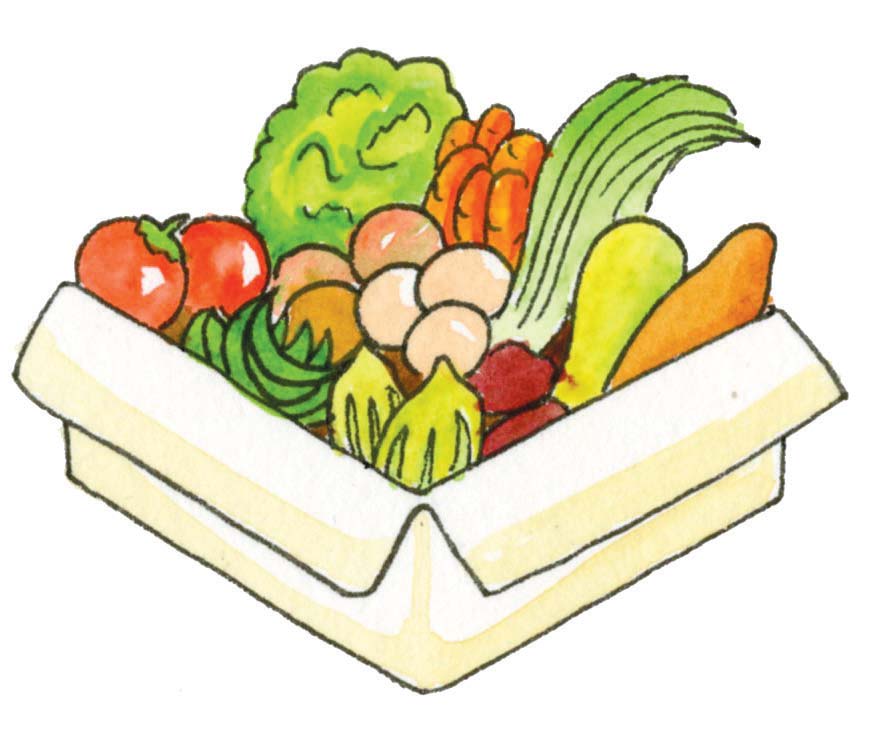
PICK YOUR SUMMER 2020 CSA!
2020 CSA options* in the greater Gallatin Valley area
*If you know of a CSA farm in our area that is not listed here, please let us know: openlocalmt@gmail.com. Thank you!
